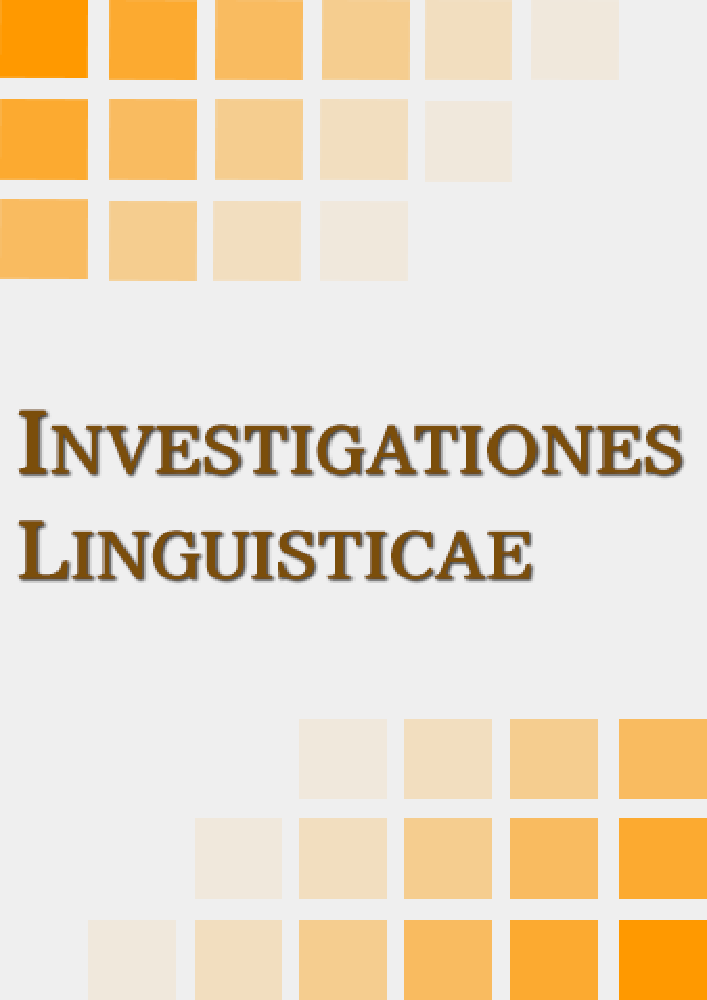Abstrakt
Objective: The aim of the work is to compare the results of research on the oral language of people with neurodegenerative diseases. On the basis of literature, research results and available information, research methodologies in the subject and test results are presented. Speech variables that have been considered in the studies were presented, including linguistic, phonetic and phonological features, prosodic, acoustic, lexical, semantic, syntactic and morpho-syntactic features. Material and methods: A comprehensive review and analysis of literature, articles in peer-reviewed journals, in the field of language disorders resulting from brain damage resulting from neurodegenerative diseases. Conclusions: Studies show that the speech analysis is a crucial diagnosis tool, which can be used for early neurodegenerative changes recognition. No such studies have been carried out in the Polish language so far.
Bibliografia
Ahmed, S., d. J. C., H. M. i Garrard, P., 2013. Semantic processing in connected speech at a uniformly early stage of autopsy-confirmed Alzheimer's disease. Neuropsychology, pp. 79-85. https://doi.org/10.1037/a0031288 DOI: https://doi.org/10.1037/a0031288
Benton, A. I., Hamsher, K. i Sivan, A., 2000. Multilingual Aphasia Examination, Iowa City: IA: AJA Associates.
Boschi, V. i inni, 2017. Connected Speech in Neurodegenerative Language Disorders: A Review. Frontiers in Psychology, 6 March. https://doi.org/10.3389/fpsyg.2017.00269 DOI: https://doi.org/10.3389/fpsyg.2017.00269
Fraser A., K. C., Meltzerb, J. A. i Rudzicza, F., 2015. Linguistic Features Identify Alzheimer's Disease in Narrative Speech. Journal of Alzheimer's Disease, August, p. 407-422. https://doi.org/10.3233/JAD-150520 DOI: https://doi.org/10.3233/JAD-150520
Gaweł, M. i Potulska-Chromik, A., 2015. Choroby neurodegeneracyjne: choroba Alzheimera i Parkinsona. Postępy Nauk Medycznych, pp. 468-476.
Gliwa, R., 2017. Logopeadica Lodzienia. brak miejsca:brak nazwiska
Gonzalez-Moreira, E. i inni, 2015. Automatic Prosodic Analysis to Identify Mild Dementia. BioMed Research International. https://doi.org/10.1155/2015/916356 DOI: https://doi.org/10.1155/2015/916356
Goodglass H, K. E. B. B., 2001. Boston Diagnostic Aphasia Examination. 3rd ed..
Hoffman, I. i inni, 2010. Temporal parameters of spontaneous speech in Alzheimer's disease. International Journal of Speech-Language Pathology, pp. 29-34. https://doi.org/10.3109/17549500903137256 DOI: https://doi.org/10.3109/17549500903137256
Khodabakhsh, A., Yesil, F., Guner, E. i Demiroglu, C., 2015. Evaluation of linguistic and prosodic features for detection of Alzheimer's disease in Turkish conversational speech. EURASIP: Journal on Audio, Speech and Music Processing. https://doi.org/10.1186/s13636-015-0052-y DOI: https://doi.org/10.1186/s13636-015-0052-y
König, A. i inni, 2015. Automatic speech analysis for the assessment of patients with predementia and Alzheimer's disease. Alzheimer's & Dementia: Diagnosis, Assessment & Disease Monitoring, March, pp. 112-124. https://doi.org/10.1016/j.dadm.2014.11.012 DOI: https://doi.org/10.1016/j.dadm.2014.11.012
Lewicka, T., Stompel, D. i Nowakowska-Kempna, I., 2014. Zaburzenia językowe w chorobach neurodegeneracyjnych : aspekty diagnostyczne i terapeutyczne. Logopedia Silesiana 3, pp. 76-94.
Pagliarin, i inni, 2014. Montreal-Toulouse language assessment battery for aphasia: validity and reliability evidence. NeuroRehabilitation, pp. 463-471. https://doi.org/10.3233/NRE-141057 DOI: https://doi.org/10.3233/NRE-141057
Podemski, R., 2008. Kompendium neurologii. Gdańsk: Via Medica.
Rudzicz, F., 2016. Toward Dementia Diagnosis via Artificial Intelligence. Today's Geriatric Medicine, March/April, p. 8.
Rymarczyk, K., 1999. Zaburzenia prozodii emocjonalnej i lingwistycznej u pacjentów z uszkodzeniami mózgu. Przegląd Psychologiczny , pp. 135 - 150 .
Sajjadi, S. A., Patterson, K., Tomek, M. i Nestor, P. J., 2011. Abnormalities of connected speech in semantic dementia vs Alzheimer's disease. Aphasiology, pp. 847-866. https://doi.org/10.1080/02687038.2012.654933 DOI: https://doi.org/10.1080/02687038.2012.654933
Singh, S., Bucks, R. S. i Cuerden, J. M., 2000. An evaluation of an objective technique for analysing temporal variables in DAT spontaneous speech. Aphasiology. https://doi.org/10.1080/02687040143000041 DOI: https://doi.org/10.1080/02687040143000041
Szczudlik, A. i inni, 2016. Sytuacja osób chorych na chorobę Alzheimera w Polsce, Warszawa: Polskie Towarzystwo Alzheimerowskie.
Szepietowska, E. M. i Daniluk, B., 2000. Zaburzenia językowe w demencji w ujęciu neuropsychologii klinicznej. Audiofonologia, pp. 117-135.
Yancheva, M., Fraser, K. i Rudzicz, F., 2015. Using linguistic features longitudinally to predict clinical scores for Alzheimer's disease and related dementias. Drezno, Association for Computational Linguistics . https://doi.org/10.18653/v1/W15-5123 DOI: https://doi.org/10.18653/v1/W15-5123
